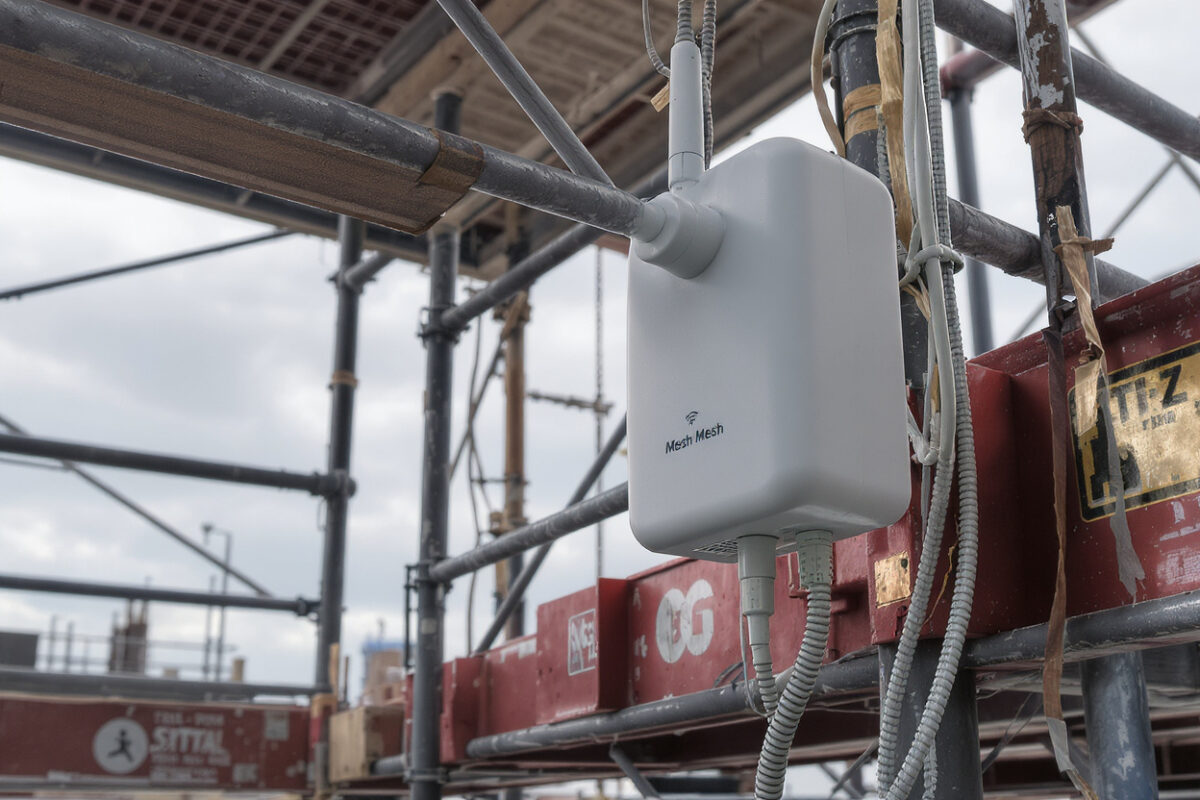From temporary construction sites and live events to emergency response zones and mobile security units — there are countless scenarios across the UK where fast, resilient connectivity is critical. Yet too often, the go-to solutions are legacy: run some cable, try a 4G SIM, or rely on a patchy Wi-Fi signal.
But there’s a better way.
This article explores why modern wireless mesh infrastructure offers a superior solution to fibre, 4G, or traditional Wi-Fi for temporary or mobile deployments. We’ll break down the tech, use real-world examples, and help you spot the difference between a quick fix and a truly future-proofed approach.
The Problem With Fibre and 4G in Non-Permanent Setups
Let’s start with fibre.
It’s fast, reliable and used by thousands of UK businesses — but it’s completely impractical for anything short-term. Installing fibre can take weeks, involves permissions, physical trenching or pole runs, and comes with hefty setup fees. If your deployment lasts less than a few months, it’s almost certainly not viable.
4G (and even 5G) has stepped in as a more mobile alternative. But anyone who’s tried to stream video, run CCTV, or manage devices over a consumer-grade SIM knows the pain:
Signal blackspots and dead zones
Congestion during peak times
Unstable uploads
Data caps or throttling
Poor latency for live streams or VoIP
And when the connection matters — like during an emergency event or for live security monitoring — unreliable isn’t just inconvenient. It’s a risk.
What Makes Wireless Mesh Different?
Wireless mesh networks don’t rely on a central hub (like a traditional Wi-Fi access point). Instead, each node acts as both a receiver and a transmitter, passing data to its nearest neighbour. The result is a self-forming, self-healing network that adapts in real time to the environment around it.
This matters for temporary or mobile sites because:
There’s no need for fixed infrastructure – nodes can be battery-powered, solar-powered or mains-fed
The system automatically reconfigures itself if a node moves or fails
Coverage is extended without signal degradation
Line of sight isn’t essential – you don’t need perfect placement
For example: if you’re setting up a temporary command centre at a festival or a remote CCTV tower at a construction site, mesh nodes can be dropped into place and connect automatically, forming a strong and secure network with no cabling, trenching or delays.
Use Case: Construction Sites
Temporary offices, site cabins, CCTV, vehicle gates, biometric access control, bodycams, handheld tablets — all need reliable connectivity.
On a UK construction site, traditional cabling is expensive, gets damaged, and doesn’t cope well with shifting layouts. 4G routers struggle as heavy equipment and steel interfere with signal.
Mesh solves this:
Nodes can be mounted on cranes, scaffolding, cabins or towers
The network flexes as the build progresses
You can connect everything — CCTV, access control, tablets — on one secure private mesh
When the job’s done, the nodes move with you to the next project
Use Case: Events, Festivals & Pop-Up Sites
Public events bring thousands of people, dozens of vendors and huge security needs — for just a weekend.
Fibre? Too late. 4G? Jammed by mobile users. Wi-Fi? Too weak across large spaces.
Mesh works perfectly here:
Nodes connect security, PA, stage, cashless systems, lighting and operations staff
The network doesn’t collapse under load
You can prioritise traffic (e.g. security over public usage)
Cameras stream live without dropout
All gear can be packed down and reused elsewhere

Use Case: Emergency and Rapid Response
Emergency responders, search & rescue teams, and temporary control centres can’t wait for Openreach or hope for mobile coverage.
Wireless mesh offers:
Plug-and-play deployment from backpacks or vehicles
Encrypted, private communications without relying on public networks
Instant CCTV and sensor connectivity
Drones and robots connected live to base units
Whether it’s flooding in Yorkshire or a major road closure in Kent, responders can set up resilient comms in minutes — with no need for towers or backhaul.
Advantages Over Fibre, 4G and Wi-Fi
Let’s summarise the benefits:
| Feature | Fibre | 4G / 5G | Wireless Mesh |
| Setup Time | Weeks | Instant (varies) | Instant |
| Infrastructure Required | Yes | None | None |
| Mobility | None | Yes | Yes (Flexible) |
| Resilience / Self-Healing | No | No | Yes |
| Range / Coverage | Fixed | Variable | Expandable |
| Cost for Temporary Use | High | Varies | Reusable & Cost-Efficient |
Things to Look for in a Good Mesh Deployment
If you’re exploring mesh for your next project, here’s what to check:
Military-grade encryption
Proven track record in UK conditions
Ruggedised hardware for weather and dust
Battery or solar-ready
Supports third-party systems (CCTV, sensors, access control, alarms)
Conclusion
In a world where uptime, mobility and security matter — mesh wins.
It’s fast to deploy, secure, adaptable, and reusable. It works in environments where fibre and 4G fail. And it gives you the performance of permanent infrastructure without the cost or delay.
If your deployment is mobile, remote, or temporary — it’s time to ditch the patchy fixes and go mesh.

